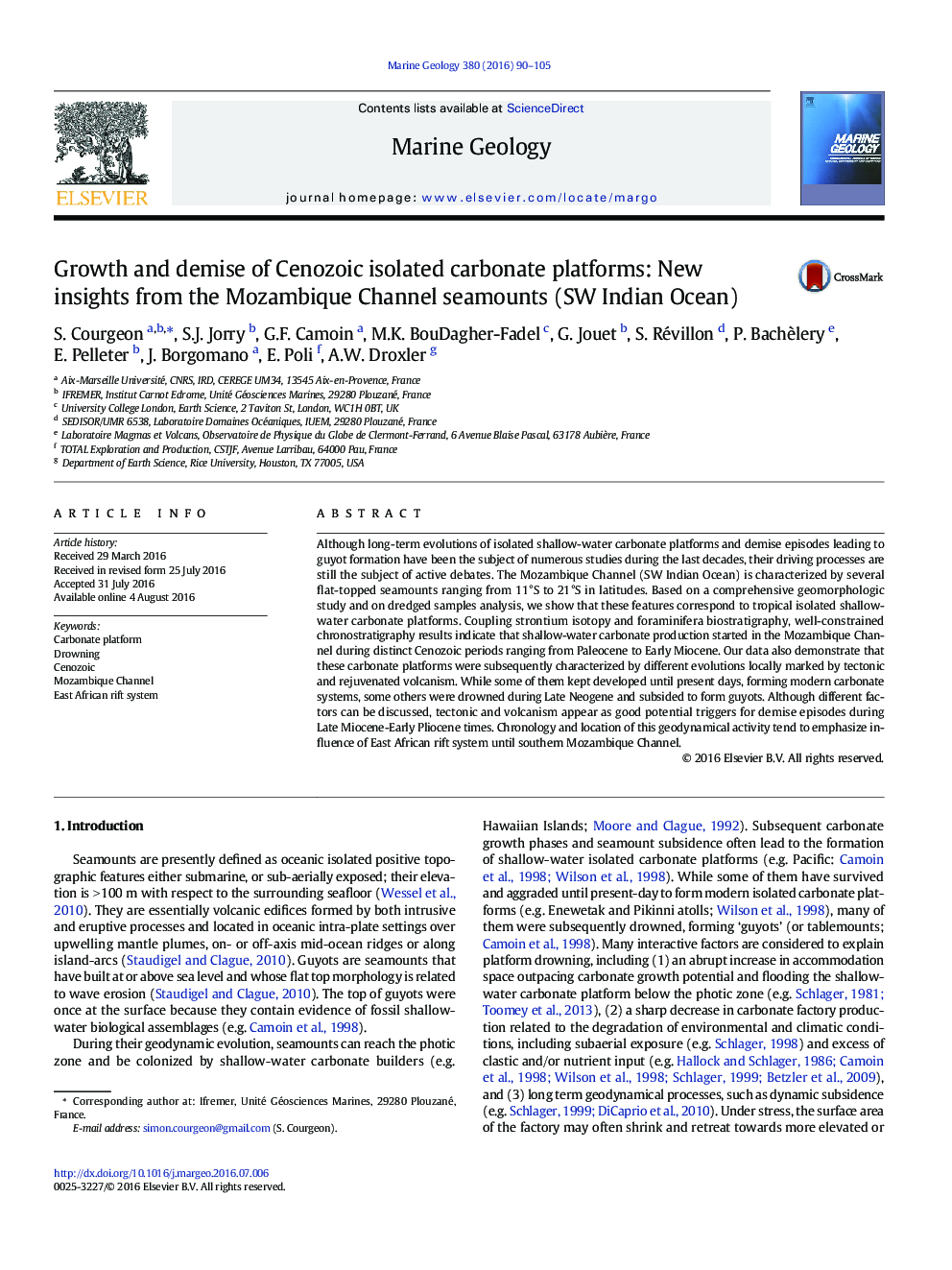| کد مقاله | کد نشریه | سال انتشار | مقاله انگلیسی | نسخه تمام متن |
|---|---|---|---|---|
| 6441288 | 1639072 | 2016 | 16 صفحه PDF | دانلود رایگان |

- The flat-top seamounts of the Mozambique Channel correspond to drowned isolated shallow-water carbonate platforms.
- Chrono-stratigraphy indicate that these carbonate systems colonized their substratum during distinct Cenozoic periods.
- Major backstepping and drowning episodes were most likely triggered by geodynamical activity (tectonic and volcanism).
- Mozambique Channel isolated carbonate platforms recorded southern and diffuse propagation of the East African rift system.
Although long-term evolutions of isolated shallow-water carbonate platforms and demise episodes leading to guyot formation have been the subject of numerous studies during the last decades, their driving processes are still the subject of active debates. The Mozambique Channel (SW Indian Ocean) is characterized by several flat-topped seamounts ranging from 11°S to 21°S in latitudes. Based on a comprehensive geomorphologic study and on dredged samples analysis, we show that these features correspond to tropical isolated shallow-water carbonate platforms. Coupling strontium isotopy and foraminifera biostratigraphy, well-constrained chronostratigraphy results indicate that shallow-water carbonate production started in the Mozambique Channel during distinct Cenozoic periods ranging from Paleocene to Early Miocene. Our data also demonstrate that these carbonate platforms were subsequently characterized by different evolutions locally marked by tectonic and rejuvenated volcanism. While some of them kept developed until present days, forming modern carbonate systems, some others were drowned during Late Neogene and subsided to form guyots. Although different factors can be discussed, tectonic and volcanism appear as good potential triggers for demise episodes during Late Miocene-Early Pliocene times. Chronology and location of this geodynamical activity tend to emphasize influence of East African rift system until southern Mozambique Channel.
Journal: Marine Geology - Volume 380, 1 October 2016, Pages 90-105